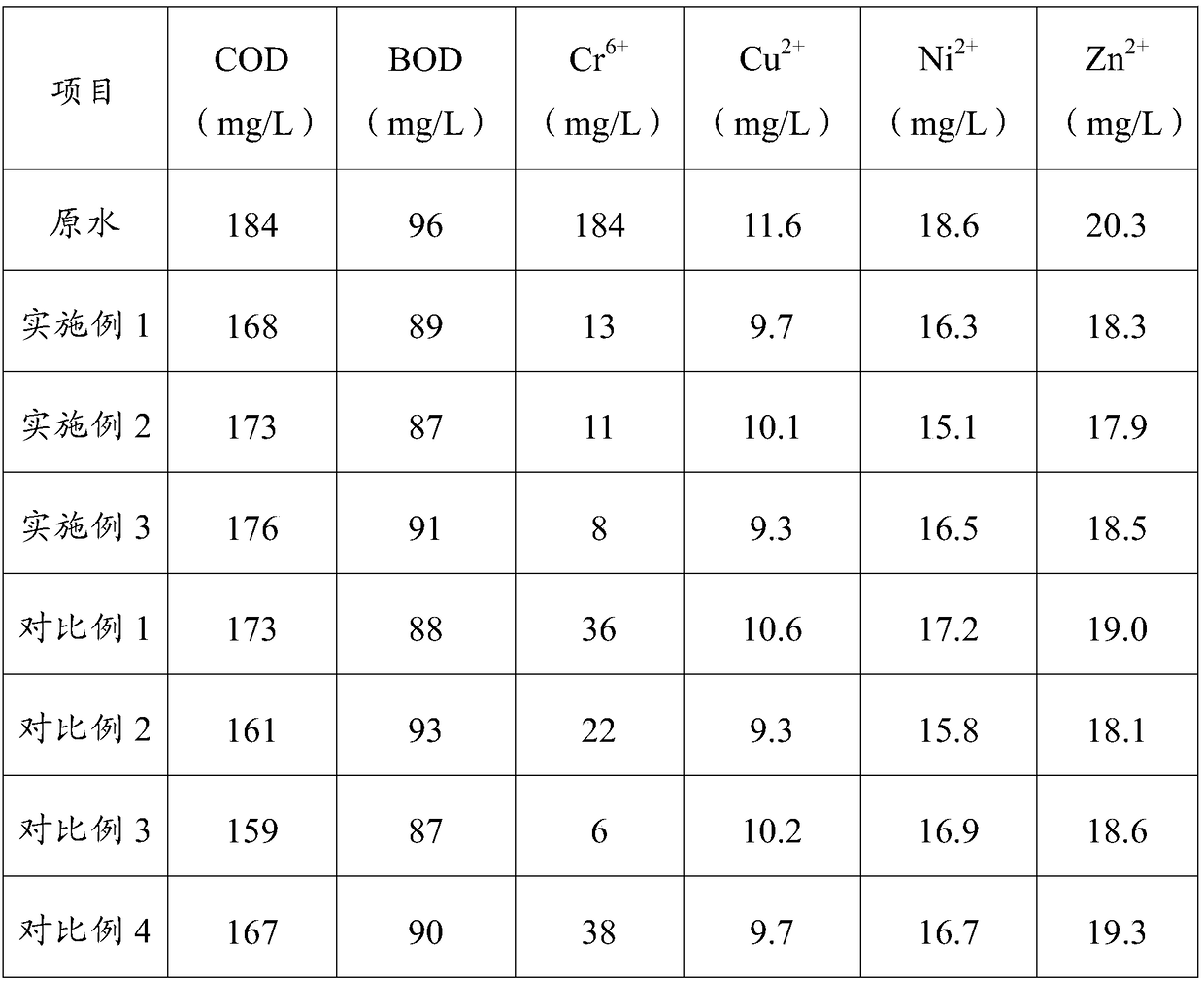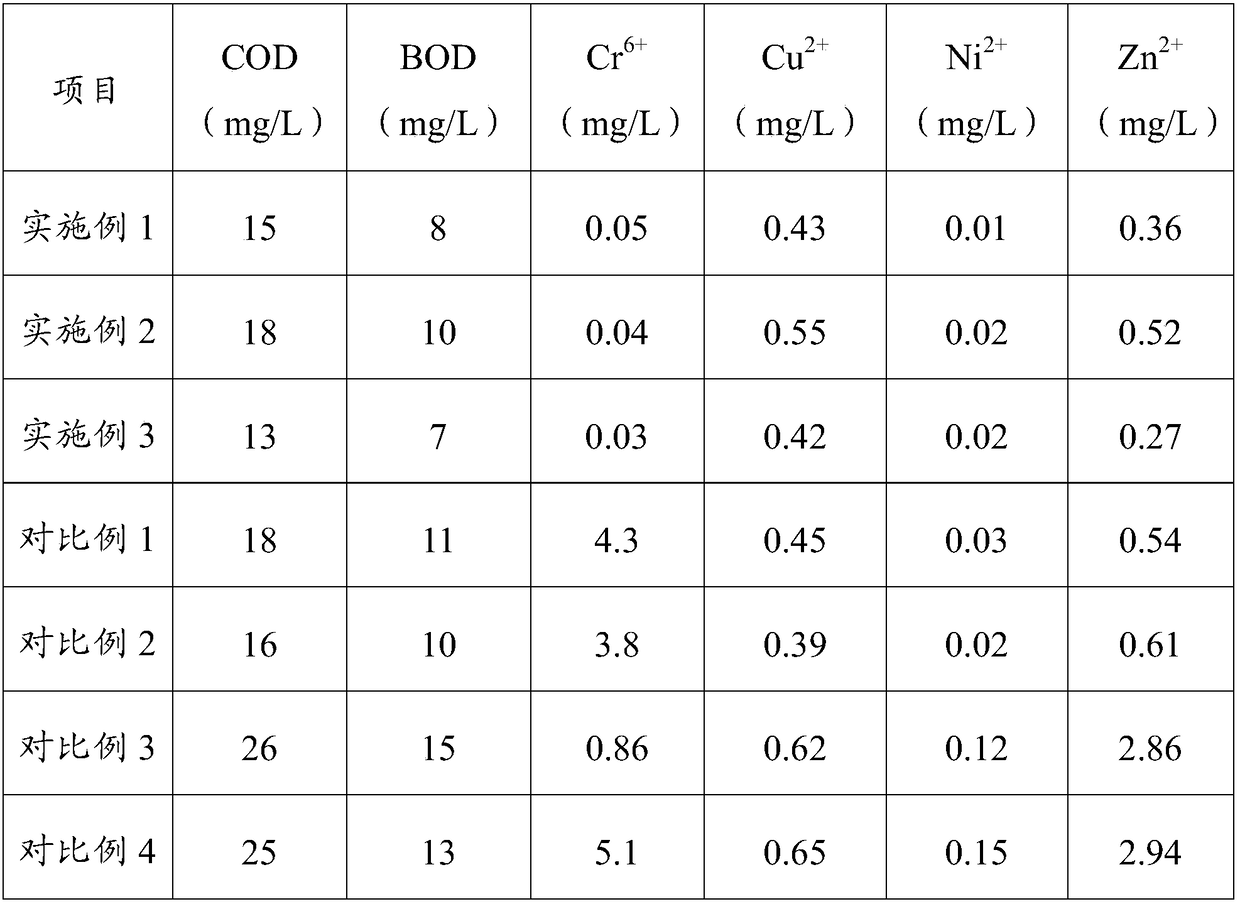Method for treating hexavalent chromium pollution in water
A hexavalent chromium, water treatment technology, applied in water pollutants, multi-stage water treatment, water/sewage treatment, etc., can solve problems such as unsatisfactory wastewater treatment effects, achieve significant treatment effects, stimulate rapid proliferation, and improve efficiency Effect
- Summary
- Abstract
- Description
- Claims
- Application Information
AI Technical Summary
Problems solved by technology
Method used
Image
Examples
Embodiment 1
[0028] A method for treating hexavalent chromium pollution in water, comprising the following steps:
[0029] Step 1, the wastewater containing hexavalent chromium is discharged into the regulating pool, and the pool water is stirred to make the water quality uniform, and the wastewater containing hexavalent chromium to be treated is obtained;
[0030] Step 2, the wastewater containing hexavalent chromium to be treated is discharged into the acidification pond, and dilute hydrochloric acid is added in the acidification pond, and the pH value of the adjustment system is 2.5;
[0031] Step 3, adding a reducing agent to the acidification pool for oxidation-reduction reaction, and the mass ratio of the reducing agent to hexavalent chromium ions is 6:1, and the oxidation-reduction reaction time is 1.5h;
[0032] Wherein, the reducing agent is formed by mixing ferrous sulfate, polyphosphorus ferric chloride and urea according to the mass ratio of 3:0.5:1;
[0033] Step 4, discharge...
Embodiment 2
[0038] A method for treating hexavalent chromium pollution in water, comprising the following steps:
[0039] Step 1, the wastewater containing hexavalent chromium is discharged into the regulating pool, and the pool water is stirred to make the water quality uniform, and the wastewater containing hexavalent chromium to be treated is obtained;
[0040] Step 2, the wastewater containing hexavalent chromium to be treated is discharged into the acidification pond, and dilute sulfuric acid is added in the acidification pond to adjust the pH value of the system to 3.0;
[0041] Step 3, adding a reducing agent to the acidification pool for oxidation-reduction reaction, and the mass ratio of the reducing agent to hexavalent chromium ions is 8:1, and the oxidation-reduction reaction time is 1h;
[0042] Wherein, the reducing agent is mixed by ferrous sulfate, polyphosphorus ferric chloride and urea according to the mass ratio of 3:0.5:1;
[0043] Step 4, discharge the waste water aft...
Embodiment 3
[0048] A method for treating hexavalent chromium pollution in water, comprising the following steps:
[0049] Step 1, the wastewater containing hexavalent chromium is discharged into the regulating tank, and the pool water is stirred to make its water quality uniform, and the wastewater containing hexavalent chromium is obtained to be treated;
[0050] Step 2, the wastewater containing hexavalent chromium to be treated is discharged into the acidification pond, and dilute sulfuric acid is added in the acidification pond to adjust the pH value of the system to be 2.8;
[0051] Step 3, adding a reducing agent to the acidification tank for oxidation-reduction reaction, and the mass ratio of the reducing agent to hexavalent chromium ions is 5:1, and the oxidation-reduction reaction time is 2h;
[0052] Wherein, the reducing agent is mixed by ferrous sulfate, polyphosphorus ferric chloride and urea according to the mass ratio of 3:0.5:1;
[0053] Step 4, discharge the waste water af...
PUM
| Property | Measurement | Unit |
|---|---|---|
| Particle size | aaaaa | aaaaa |
Abstract
Description
Claims
Application Information
 Login to View More
Login to View More - R&D
- Intellectual Property
- Life Sciences
- Materials
- Tech Scout
- Unparalleled Data Quality
- Higher Quality Content
- 60% Fewer Hallucinations
Browse by: Latest US Patents, China's latest patents, Technical Efficacy Thesaurus, Application Domain, Technology Topic, Popular Technical Reports.
© 2025 PatSnap. All rights reserved.Legal|Privacy policy|Modern Slavery Act Transparency Statement|Sitemap|About US| Contact US: help@patsnap.com


